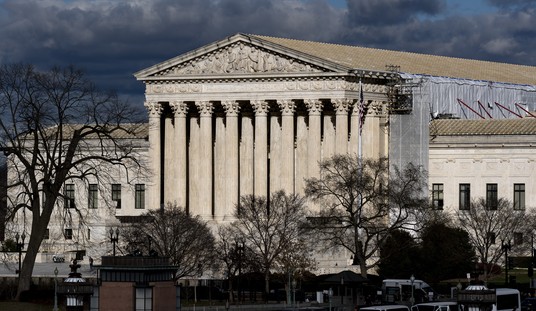One of the questions I’ve had about the migrant caravan is this: Why did they take the longest possible route to the U.S. border? A story published Sunday by the Arizona Republic suggests a couple of reasons, one of which is that caravan organizers believe judges in San Diego are more likely to approve asylum claims. Also, California’s status as a sanctuary state makes crossing there more appealing to those who don’t expect to be granted asylum.
Here’s a map of the route the caravan actually took. You’ll notice that the trip would have been significantly shorter if the caravan had headed north from Mexico City toward Texas. Instead, they traveled nearly twice as far toward Tijuana.
Map showing location of migrant caravan.. pic.twitter.com/TSM8wJxTFs
— Darlington Micah (@DarlingtonMicah) November 16, 2018
The Arizona Republic offered three major reasons for taking the long way, one of which has to do with safety along the route. The northern route toward Texas would take the migrants through some of the most dangerous drug cartel territories in the country.
When the migrant caravan reached Mexico City in early November, organizers held group meetings to discuss which route to take to the border with the United States, said Alex Mensing, an organizer with Pueblo Sin Fronteras, which helped organize the migrant caravan after it crashed through gates into Mexico from Guatemala…
In the end, the migrant caravan decided to head for Tijuana on a route that took them through Pacific Coastal states to avoid the dangers posed by criminal gangs in states along the Gulf Coast.
“The cartels have complete control over pretty much everything that happens in Reynosa and other border cities in that area,” Mensing said. “And if you go to seek asylum and you get turned away at the bridge by Customs and Border Protection, when you walk back out on the Mexican side, you’ve got Mexican immigration and the cartels waiting for you. Whoever gets you first, it’s not going to be good.”
The western portion of Mexico is controlled by the Sinaloa cartel which, for whatever reason, has not made been as focused on kidnapping and extorting migrants. So that’s the first big reason for taking the long route: It was a lot safer.
The second reason is that Tijuana is a large city which is better equipped to handle a large influx of migrants than cities along the border with Texas, making it a better choice for a large group. But the third reason is one I haven’t seen discussed much before. Caravan organizers may be aware that California is a better place to enter the U.S. because judges there are more likely to approve asylum claims.
A 2016 report by the Government Accountability Office, the investigative arm of Congress, found that the San Diego Immigration Court had one of the highest percentages of asylum approvals in the country for migrants in deportation proceedings.
California is also under the jurisdiction of the 9th U.S. Circuit Court of Appeals, which is generally considered more favorable toward asylum cases than those heard in the 5th U.S. Circuit Court of Appeals, which covers Texas.
“There is some truth to the fact that in the 9th circuit some immigration courts have lower denial rates,” said Mensing of Pueblo Sin Fronteras.
The story links to this GAO report which includes the following chart:

The key here though is that this is a chart for “defensive” asylum claims, meaning these are people already involved in deportation proceedings. So, bottom line, if you get caught on the wrong side of the border and you claim asylum to avoid deportation, your chances are much better in San Diego than in Houston. The story makes clear that most of the migrants in the caravan don’t know anything about this, but the organizers do.
Finally, there’s the fact that California is a sanctuary state:
Tijuana also is close to a network of American immigration lawyers from San Diego, about a 40-minute drive, and Los Angeles, about a three-hour drive, who provide legal advice and assistance to asylum seekers, Mensing of Pueblo Sin Fronteras said.
California is also a “sanctuary,” where under state law local and state police are limited from cooperating with federal immigration enforcement authorities.
California passed a law last year which makes it a “sanctuary state.” That law took effect back in January. In practice, it means that local sheriffs are prohibited from working with ICE to hand over illegal immigrants arrested for other offenses.
Though the greeting the migrant caravan received in Tijuana wasn’t a warm one, things could have been much worse on the path to Texas. And for those who manage to make it across the border illegally, California is also a safer place to be than Texas. Combine those two factors and you have an explanation for why the caravan was willing to travel an extra 600+ miles.








Join the conversation as a VIP Member